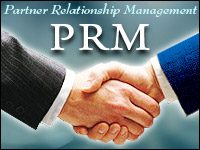
Partner relationship management, or PRM, has seen its ups and downs over the first part of this century.
Running an indirect channel is vitally important to any vendor trying to extend its reach without incurring the high costs of building up a sales team and all that supports it. Many vendors figure it’s more economical to pay partners for performance than to endure the corporate buildout, and they have a good point.
That said, it’s important to understand that the indirect channel isn’t for every business. Some need to field large sales teams to ensure that their messages are delivered accurately. This is especially true where a vendor continuously has to bring to market new products that need to be sold rather than purchased.
One great example is pharmaceuticals, where patents give the inventor a set number of years to exploit a new drug. After the patent expires, the secondary market can make and distribute very similar products. Doctors and allied healthcare professionals really need the continuous education that pharmaceutical reps provide.
That’s not the case with a wide variety of products and services that may not be on any particular patent and that approach commodity status except that they have specific attributes that might be key to assemblies of larger offerings — for instance, electric motors.
No, they’re not all the same and specific applications call for very specific types. If you’re in such a market, selling through an indirect channel makes a great deal of sense.
Spreadsheet Sprawl
Adopting a channel strategy enables a vendor to proceed down the price curve, delivering more favorable economies of scale to end customers by enabling channel partners to wrap their products and services around the original equipment.
This approach has worked well for many years, but it’s coming up to an inflection point, which is what’s driving the renewed interest in PRM.
Like CRM before it, PRM in many cases has been a process supported by spreadsheets. When spreadsheets work well for any application area, you can observe several characteristics driving the adoption.
First, the number of items tracked in the spreadsheet is small, and the spreadsheet acts as a prompt to the memory of the employee using it. This is a very hands-on, labor-intensive approach to a customer process, and it’s not very sustainable. As the number of things to track increases, so does the manual effort, which defeats any intention to exploit economies of scale.
Second, the processes supported often are executed person to person, either in person or on the phone. This can’t last either because it means vendors hiring lots of people to administer the channel (a so-called happy problem).
Leveraging automation involves making more processes automatic and enabling the user to solve issues without help from vendor employees. This demands more partner support than a spreadsheet can deliver.
Third, spreadsheets support relatively simple processes, such as a purchase or distribution of marketing funds. What happens when processes get more complex — for example, when deal registration or discounts need to take into account messy real-world situations?
Spreadsheets might support human decision-makers, but that goes to the heart of the argument for using automation to provide scalability and keep costs down. You can’t have it both ways.
Finally, spreadsheets are most effective in new or emerging markets because they enable simple processes (buy or don’t buy) and relatively undifferentiated product offerings (“any color you want as long as it’s black”).
With competition comes complexity as product lines become extended and few people can keep everything in their heads or on spreadsheets.
Determine Your Needs
If you look around at today’s marketplace, most of the conditions listed above are not present, which makes it increasingly difficult to operate a channel program in spreadsheets. This is the reason demand for PRM is rising and why so many channel operators are thinking hard about what to use.
My advice to channel operators is to cover the bases by examining your business and determining your needs accurately — before you start talking to vendors.
To do this well, you’ll need to ask your best partners about their needs, and you should be prepared to involve them in the early discussions about what PRM systems to select, what functions are needed, and how soon.
Your most loyal partners also will be important for giving feedback in the controlled release of the new system.
Skipping any of these three big selection steps likely will leave your business struggling to make a new system work while also keeping unhappy partners from full-scale mutiny. Don’t do that.
Instead, learn from the best CRM and ERP implementations, or maybe ask what about your own implementations worked well and what didn’t. There’s a lot of overlap when deploying major systems, and it all comes down to research and planning. You can do this.






















































Social CRM
See all Social CRM